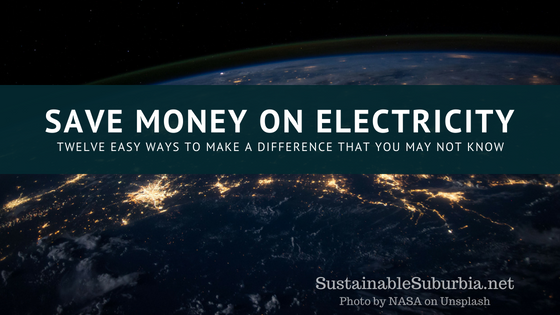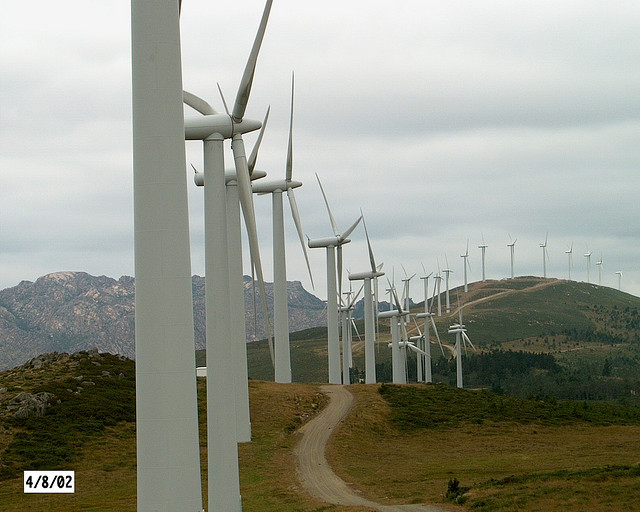
Of course you can save money on electricity by going solar. But increasingly people are realising that you don’t always need to spend money to be green. In fact, what better way to be green than by consuming less? And even if you are looking to install solar panels on your roof soon, the less electricity you use, the more green power you can feed back into the grid (and the more money you can save – or make!). So whether you plan to install solar power or not, why not begin by reducing your energy use right now?
If you haven’t already done so, begin with the low hanging fruit:
Easy ways to save money on electricity
- Change your light bulbs. Converting from incandescent bulbs to compact fluorescents (CFLs) throughout your house can make a big difference to your energy use, both in terms of your electricity bill and the energy tied up in resources – since CFLs also need to be replaced far less often. CFLs use about 20% the energy of incandescents.
Quality LED lights are even more energy efficient than CFLs (and last longer), but at the moment they are not as low-cost. However, consider using LEDs in select areas.If you are in the habit of leaving a hallway or bathroom light on in the night for your children, an LED nightlight might be a good alternative and will save you a lot of electricity over a year. - Outdoor lights: use outdoor lights with movement sensors instead of leaving a front door light on all the time; if you are installing garden lights, consider solar LED lights.
- Turn off your lights – when you are not in a room, turn off the light.
- Turn off your appliances at power points. Appliances like your TV, stereo and even your kettle can draw a significant amount of electricity even on standby. This includes unplugging phone and battery chargers, which keep drawing energy even when they aren’t charging anything.
- Turn off your computer monitor when not in use. Leaving the screen saver on actually uses quite a lot of power, especially if you still have a VGA monitor [edited in 2018 to laugh – does anyone even remember what they were??]. Even if it automatically goes into standby mode, turning your monitor off altogether is better.
- Draft-proof your house. Use draft stoppers on doors, block off your fireplace and cooling vents when not in use, seal cracks around windows.
- Wash your clothes in cold water. Particularly if you have an old standard hot water heater (as opposed to solar or instant hot water), your hot water heater could account for up to 1/3 of your electricity bill.
- Line dry your clothes whenever possible. In cold weather when you might think they won’t dry before dark, try using the dryer only for a partial dry and then hang them out. Alternatively, use a clothes rack, which you can bring inside before dark.
- If you need to use a clothes dryer, use some 100% wool dryer balls in it (3 for a small to medium load, 5-6 for a large load). These can reduce your drying time (and therefore power use) by 25%, as well as softening your clothes and leaving them less wrinkled. So you can also save money on dryer sheets and fabric softener – you won’t need them anymore! (Add a few drops of essential oil to one of the dryer balls if you want that “fresh” smell in your laundry. I use Eucalyptus oil for my towels.)
- When it’s cold, close your windows and curtains as soon as the sun goes down, to keep the warmth in your house. When it’s hot, close curtains as soon as the sun hits a window, particularly on West facing windows.
- If you have central heating or cooling, turn your thermostat down one degree in the winter and up one degree in the summer. Educate your children!
- Often it is children who leave lights and appliances switched on. Get them involved in your project to save money on your electric bill. Talk about the current bill and how much you aim to save, maybe you can plan a fun family activity as a reward for savings. (Here are some other ideas for getting your kids involved)
This list gives you a good place to start reducing both your gas and electricity bills. And once you have the basics down, there are many other ways to save electricity, and for every kilowatt you save you are reducing your carbon footprint and becoming more sustainable. So what should you do next to reduce your gas and electricity bills even further?




Excellent read, I have to admit. You’ve researched the subject extremely well 🙂
Excellent read, I have to admit. You’ve researched the subject extremely well 🙂
This is good news. Yes, the panels of today might not be very efifniect. However, as it is being use more often in many homes or countries, there will be a continuous development making it more efifniect than what they are today.Take for instance computers, in the 60s computers were as big as a house while performing very slow. Look at computers today, they’re thin, portable, every efifniect and extremely fast.I see solar energy development in the same way.
This is good news. Yes, the panels of today might not be very efifniect. However, as it is being use more often in many homes or countries, there will be a continuous development making it more efifniect than what they are today.Take for instance computers, in the 60s computers were as big as a house while performing very slow. Look at computers today, they’re thin, portable, every efifniect and extremely fast.I see solar energy development in the same way.
Please do not put CFL globes in the rubbish bin as they contain Mercury!
I would like to add, whilst LED light globes are more expensive, they actually end up being cheaper in the long run because they last much longer as well as using less electricity. If you can afford the up front cost then it is definitely worth it as you will save money as well as help the environment. I have found the CFL globes die way before there expected life and then there is the issue of disposal.
CFL light globes need to be disposed of safely as they contain Mercury. They can not be disposed of in normal waste bin as this will leach Mercury into the environment when they break. A lot of people do not know this or simply would not bother taking old CFL globes to a hazardous waste disposal.
If you have CFL globes please do not put them in the bin, instead store them in the garage (making sure they won’t break) and take them to a chemical clean up. It is worth writing the dates of these chemical cleanups on your calendar. Some councils and organisations run these – do a google search to find your closest one. They also take other household chemicals, used batteries and other hazardous waste.
It may be worth doing an article about this to educate and help people located their closest locations and drop off dates for ‘safely’ disposing of household chemicals.
You’re absolutely right Ben. This is an issue I have covered somewhat in my article on LEDs, and I have some information on how to dispose of CFLs safely in this article https://sustainablesuburbia.net/where-does-all-the-mercury-go/ (though only in Australia).
Please do not put CFL globes in the rubbish bin as they contain Mercury!
I would like to add, whilst LED light globes are more expensive, they actually end up being cheaper in the long run because they last much longer as well as using less electricity. If you can afford the up front cost then it is definitely worth it as you will save money as well as help the environment. I have found the CFL globes die way before there expected life and then there is the issue of disposal.
CFL light globes need to be disposed of safely as they contain Mercury. They can not be disposed of in normal waste bin as this will leach Mercury into the environment when they break. A lot of people do not know this or simply would not bother taking old CFL globes to a hazardous waste disposal.
If you have CFL globes please do not put them in the bin, instead store them in the garage (making sure they won’t break) and take them to a chemical clean up. It is worth writing the dates of these chemical cleanups on your calendar. Some councils and organisations run these – do a google search to find your closest one. They also take other household chemicals, used batteries and other hazardous waste.
It may be worth doing an article about this to educate and help people located their closest locations and drop off dates for ‘safely’ disposing of household chemicals.
You’re absolutely right Ben. This is an issue I have covered somewhat in my article on LEDs, and I have some information on how to dispose of CFLs safely in this article https://sustainablesuburbia.net/where-does-all-the-mercury-go/ (though only in Australia).
I assume you mean 60-70 kiatwlot-hours. To average that amount of energy, you’d need a 10 kW solar array where I live, larger is most of the USA. That’s really at the high end of what people put up, unless they’re very well off.The best way to get an accurate estimate for your neesd is to contact a solar installer in your area. Look in an old-style phone book under “solar” and arrange for a free quote. Then you can decide whether you want to go ahead or not. The costs will likely be in the tens of thousands of dollars.If you want to see what we did, you can email me through my profile. However, our system is considerably more modest than the specs you propose. The usual strategy is to get your house’s energy usage down by conservation, insulation, and efficiency, first, then go for a much smaller solar installation.
I assume you mean 60-70 kiatwlot-hours. To average that amount of energy, you’d need a 10 kW solar array where I live, larger is most of the USA. That’s really at the high end of what people put up, unless they’re very well off.The best way to get an accurate estimate for your neesd is to contact a solar installer in your area. Look in an old-style phone book under “solar” and arrange for a free quote. Then you can decide whether you want to go ahead or not. The costs will likely be in the tens of thousands of dollars.If you want to see what we did, you can email me through my profile. However, our system is considerably more modest than the specs you propose. The usual strategy is to get your house’s energy usage down by conservation, insulation, and efficiency, first, then go for a much smaller solar installation.